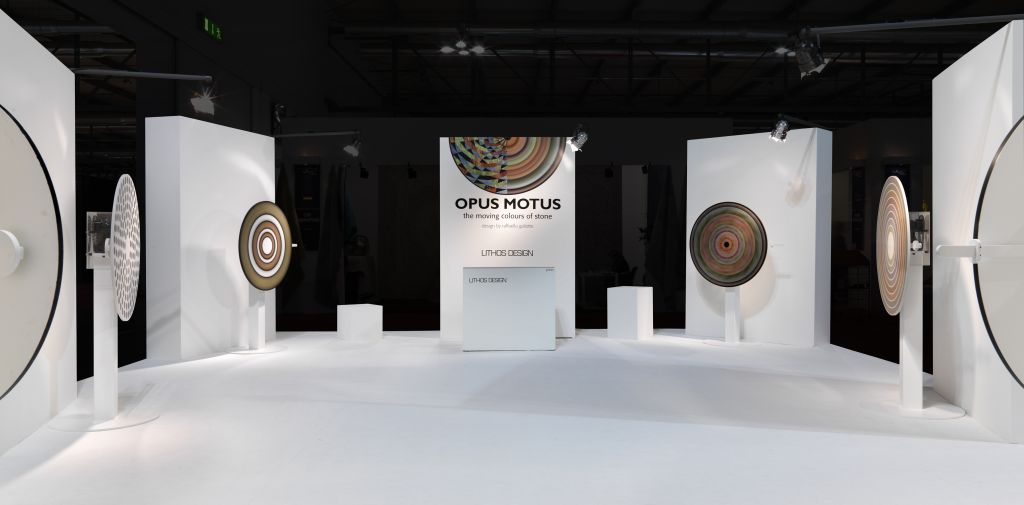Opus Motus.
Look out for the stone illusion.
October 27, 2013

It is intrinsically human and timeless to ask yourself about the nature of colour, to renew your memories and perceptive experience of it in your mind’s eye, to push yourself to experiment with its combinations and methods. To describe chromatics, it is customary to refer to the material that constitutes it; for this reason, in the end you often evoke stone, whose essence is naturally polychromatic. The “Opus Motus” installation which Lithos Design is presenting at Macef and Marmomacc 2013 invites the observer to experiment doubly in the reality of colour, in a dynamic and playful manner.

“Opus Motus” in the title itself recalls a spell. The exhibition consists of six stone works – illusionist instruments – designed to shift the idea of colour from the rational and tangible objectivity of the surface, to the perceptive subjectivity, originating from wonder and amazement.
It consists of large inlaid marble rings, a modernised take on the ancient technique of opus sectile and multi-coloured inlaid marble works: flat rings, reduced in thickness, which feature cut-out formal elements on the surface. The static appeal of the surface stands out for the amazing composition, where the role of colour is to emphasise and clarify the assembly of the various parts, making the geometric pattern evident.
Like lively and exuberant medallions, they do not shy away from revealing the textile metaphor which even now can be expressed through the composition of stone elements, with the most varied and broad-ranging geometric patterns.
Each ring is an individual figurative nucleus in itself but, as a whole, they suggest a contemporary “cosmetic” ability that combines technology with material resources, recalling and updating construction skills of the past.
All certainties to this point.
The rings in fact are also an invitation. Like amulets, they draw the observer, they want to be handled. A simple push device allows them to be transformed and, through movement, the colour changes its “mask”.
The rotation transferred to the rings grows faster according to the momentum given to the large stone spinning tops. The faster the movement, the more illusory and magnetic the ensuing vision.

In the movement, the visual experience is extended to the other senses, evoking a fourth, elusive dimension.
In the vortex, the visual perception is renewed every time the wheel turns, responding to the continuous mobility of the point of view, of the multiple relativity of the focus. Observing the rings both inebriates and confounds; you lose the direction and orientation of rotation.
The colours, which were initially clear and separate, blend together and merge; the circular, polygonal weaving, which the eye initially saw the composition of, merge together into an undivided continuum.
Explaining colour and its dynamic “cancellation” becomes as ineffable as stopping the movement of the ring itself with your eyes. The vortex generates an illusion of lightness and transparency, for a body which in actual fact is as heavy as the material that constitutes it.
After a while, the rings slow down, yielding to gravity and the game of forms marked on the surfaces, their composition and colour, go back to shining out under the effect of the light. Another marvel that stone has made possible.
go to LithosDesign
Opus Motus videos:
Rose
Slot
Pinwheel
Lollipop
Cogs
Brickbreak
back to top print
Post-it
ISSN 2239-6063
edited by
Alfonso Acocella
redazione materialdesign@unife.it





